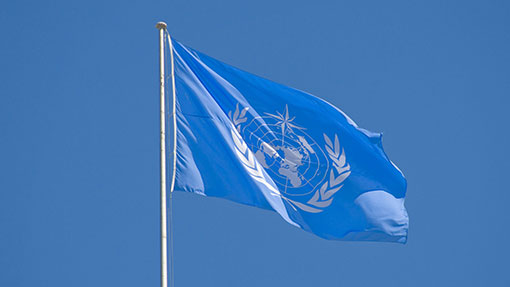At a glance: World agriculture outlook 2014-23

The UN’s Food and Agricultural Organisation (FAO) and the Organisation for Economic Co-operation and Development (OECD) have joined forces to predict what will happen in world agriculture markets between now and 2023.
The OECD-FAO Agricultural Outlook 2014 investigated what effect population, changing demands and other factors will have on world agricultural markets across different products and regions.
Key messages from the report were:
Shifting demands
Overall, demand for agricultural products is expected to remain firm, but to expand at a slower rate compared to the past 10 years.
See also: Protest against EU-US trade deal planned
Wheat remains at the core of human diets, with a demand of more than 1.2bn tonnes of cereals for human consumption projected in 2023 – up 150m tonnes from 2011-13.
However, rising incomes in developing countries, urbanisation and changing eating habits, will continue to shift diets towards higher protein, fats and sugars, while demand for biofuels will also increase.
As a result, in the next decade livestock and biofuel production are expected to grow at a faster rate than crop production, with biofuel consumption and production expected to increase by 50%.
This will have a knock-on effect of shifting world crops away from staple food crops such as rice and wheat towards coarse grains and oilseeds to meet demand for “food, feed and biofuel”.
By 2023, coarse grain demand is expected to increase by 20% and wheat (as a food commodity mainly) by 12%, while oilseeds consumption will increase by 26% to meet demand for vegetable oils and protein meals – more than any other commodity.
Production and consumption
Production growth will come mainly from regions where factors such as land, water availability and policy regulations are least restrictive, with the bulk of production increases coming from Asian and Latin American countries.
See also: UK grain prices under pressure as harvest starts
Rapidly growing Asian economies are expected to account for the biggest increase in consumption, while declining populations and saturated per person food in regions such as North America and Europe, will result in slower consumption growth there.
A move towards more processed and prepared foods will also widen the gap between farmgate and retail prices of many foods.
Developing countries will consume 80% of the additional meat produced – half of this being poultry due to its relative affordability, accessibility and the fact that it is viewed as a healthy meat and faces few cultural barriers.
Pork is the world’s second most popular meat and is projected to account for nearly 30% of the additional meat consumed over the next decade (led by Chinese consumers), while increased beef consumption will account for 15% and sheepmeat for 6%.
Demand for dairy products will continue to increase at a rapid rate through the decade, with consumption a person expected to increase by 1.9%/year for cheese and butter.
Prices
Over the next couple of years, crop prices are expected to drop before stabilising above pre-2008 levels, but still significantly below recent peaks. World trade is expected to be boosted as a result.
World wheat prices are projected to decrease from £166/tonne in 2014 to £158/tonne in 2023, while the world’s growing livestock herd will push coarse grain prices up from £114/tonne in 2014 to £132/tonne in 2023.
The global area planted to oilseeds continues to increase, but will do so too slowly to meet demand, pushing prices up from an average £300/tonne in 2014 to £306/tonne in 2023.
Meat prices are also expected to rise as firm import demand from Asia and herd rebuilding in North America will support strong prices and take beef prices to record world levels – from 272p/kg in 2014 to 283p/kg in 2014.
Dairy prices are forecast to fall slightly from their high levels due to sustained productivity gains and India will overtake the EU as the world’s biggest milk producer.
Imports and exports
North and South America will strengthen their ranking as the top exporting regions in volume and value, while Africa and Asia will become net importers to meet growing demands of population and changing diets.
